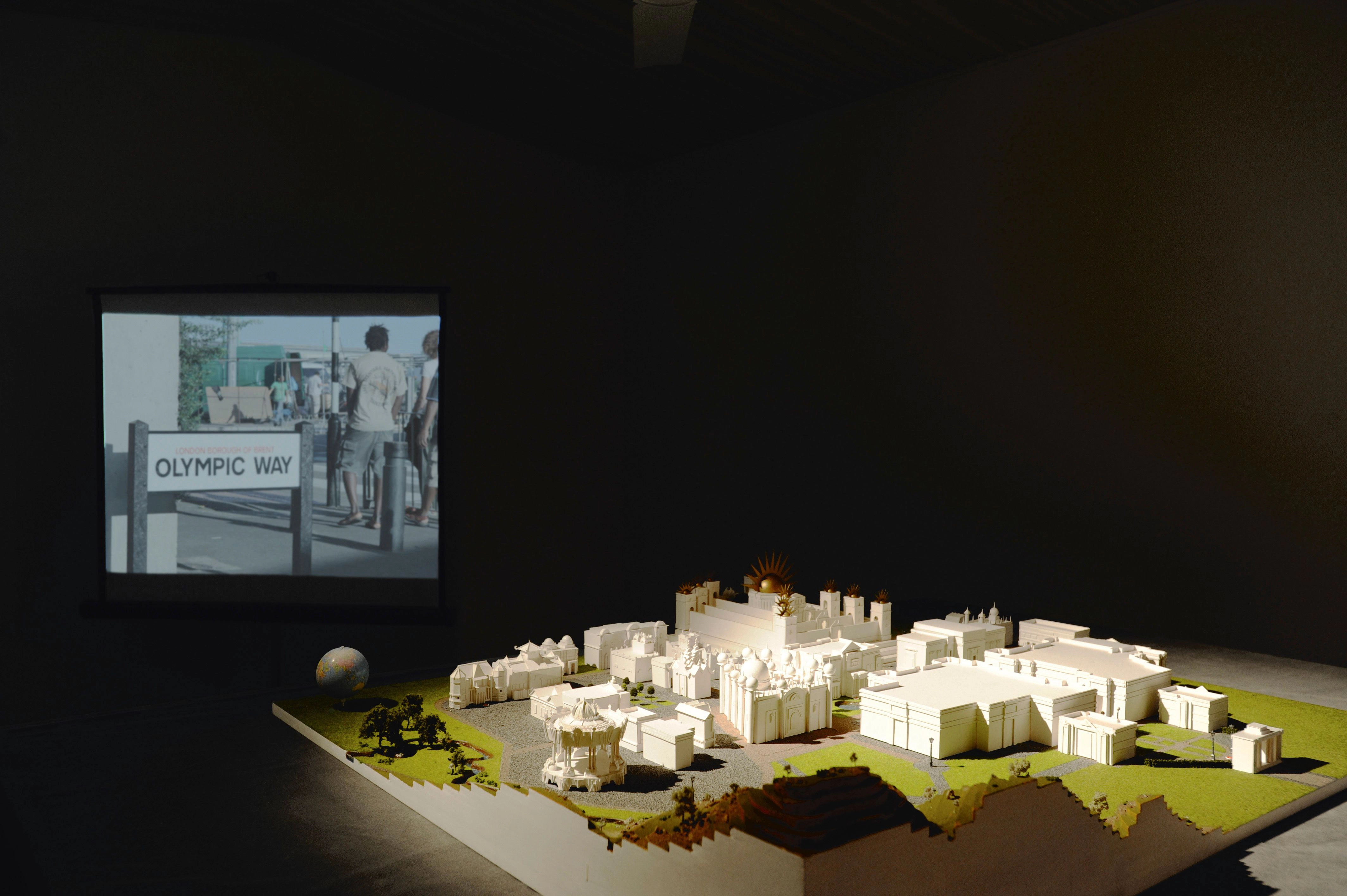
Empire City: The World on One Street, 2009
installation view with architectural model and video, ‘Rise Early, Be Industrious’, CCA, Glasgow
O wretched man that I am, that I should sleep in the daytime!
—John Bunyan, The Pilgrim’s Progress (1678)
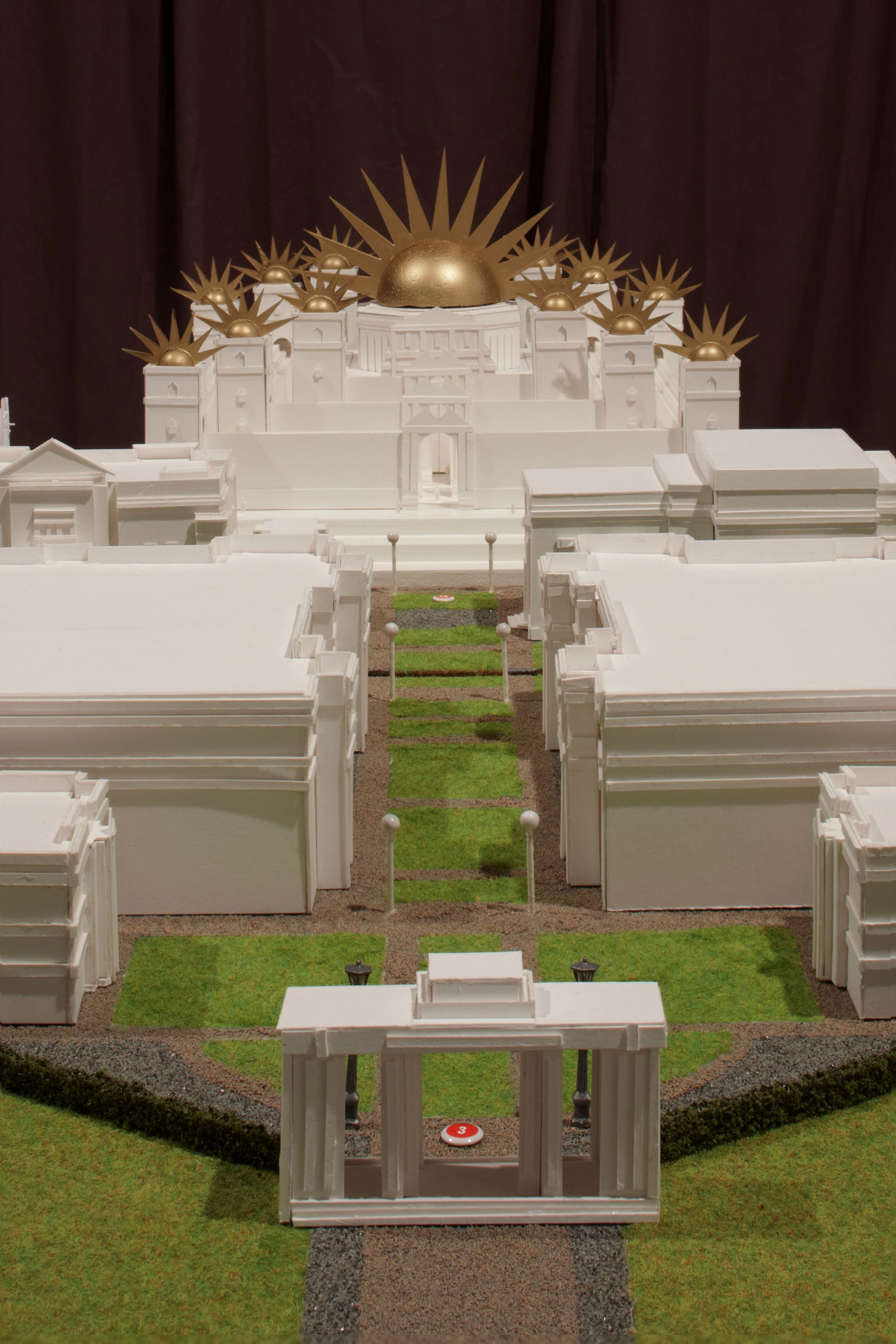
Empire City: The World on One Street, 2009
architectural model (detail)
The New Jerusalem, 2012
mixed-media installation and video
Central to this installation are two architectural models and fabric banners using display methods from the past, in order to demonstrate the relationship between imperialism, trade and religion. It was presented as part of the solo show ‘Rise Early, Be Industrious’ at MK Gallery (Milton Keynes), Arnolfini (Bristol), CCA (Glasgow), 2012–13.
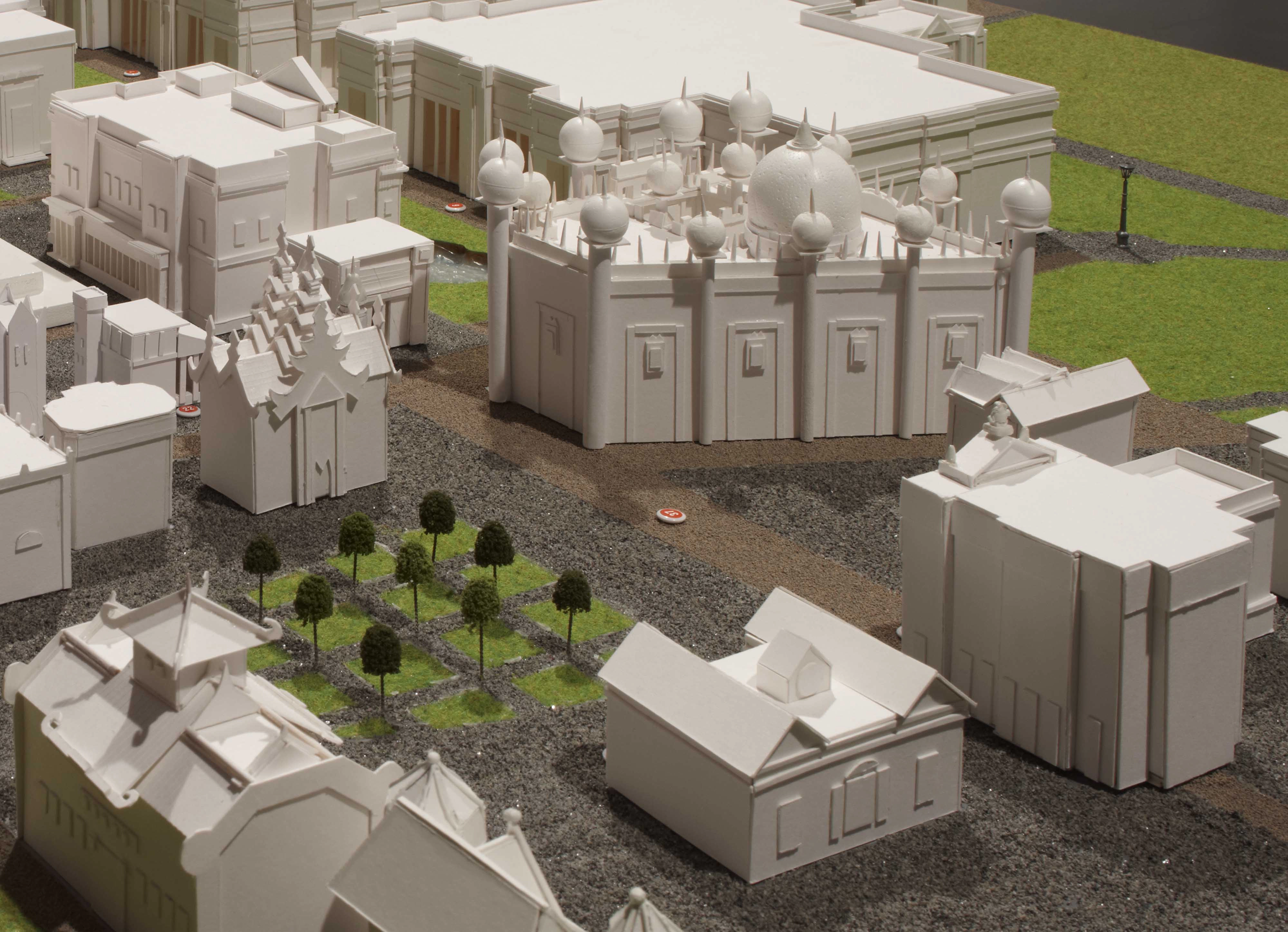
Empire City: The World on One Street, 2009
architectural model (detail)
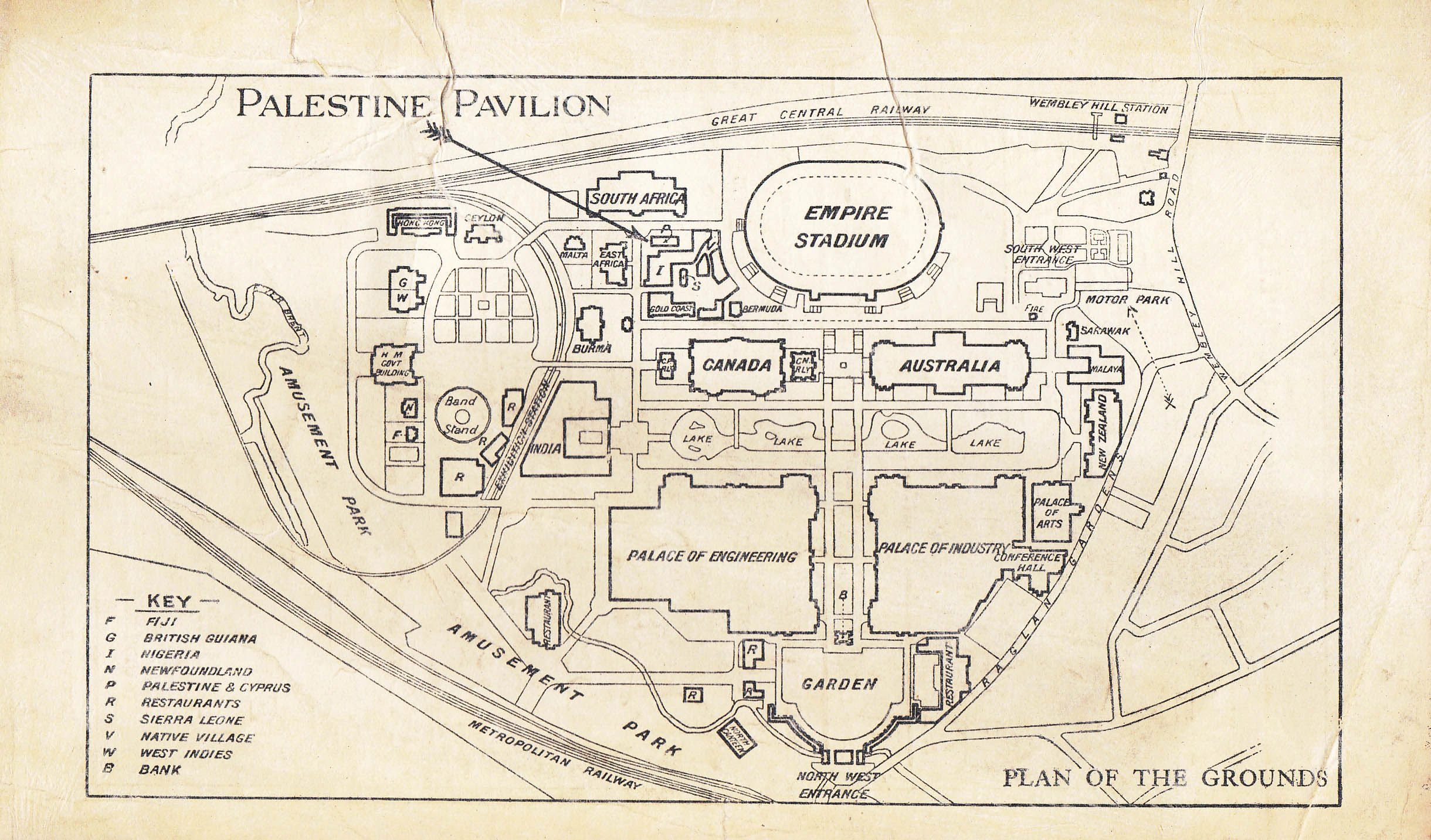
partial map of the British Empire Exhibition, 1924
Empire City – The World on One Street (2009) represents the British Empire Exhibition, which took place in the West London suburb of Wembley in 1924. The model mixes the plan of the British Empire Exhibition with the fictional topography of John Bunyan’s widely read evangelical allegory The Pilgrim’s Progress (1678). As an event, its purpose was to educate the public during their leisure time about Britain’s trading relationships with its colonies and bolster support for imperialism.
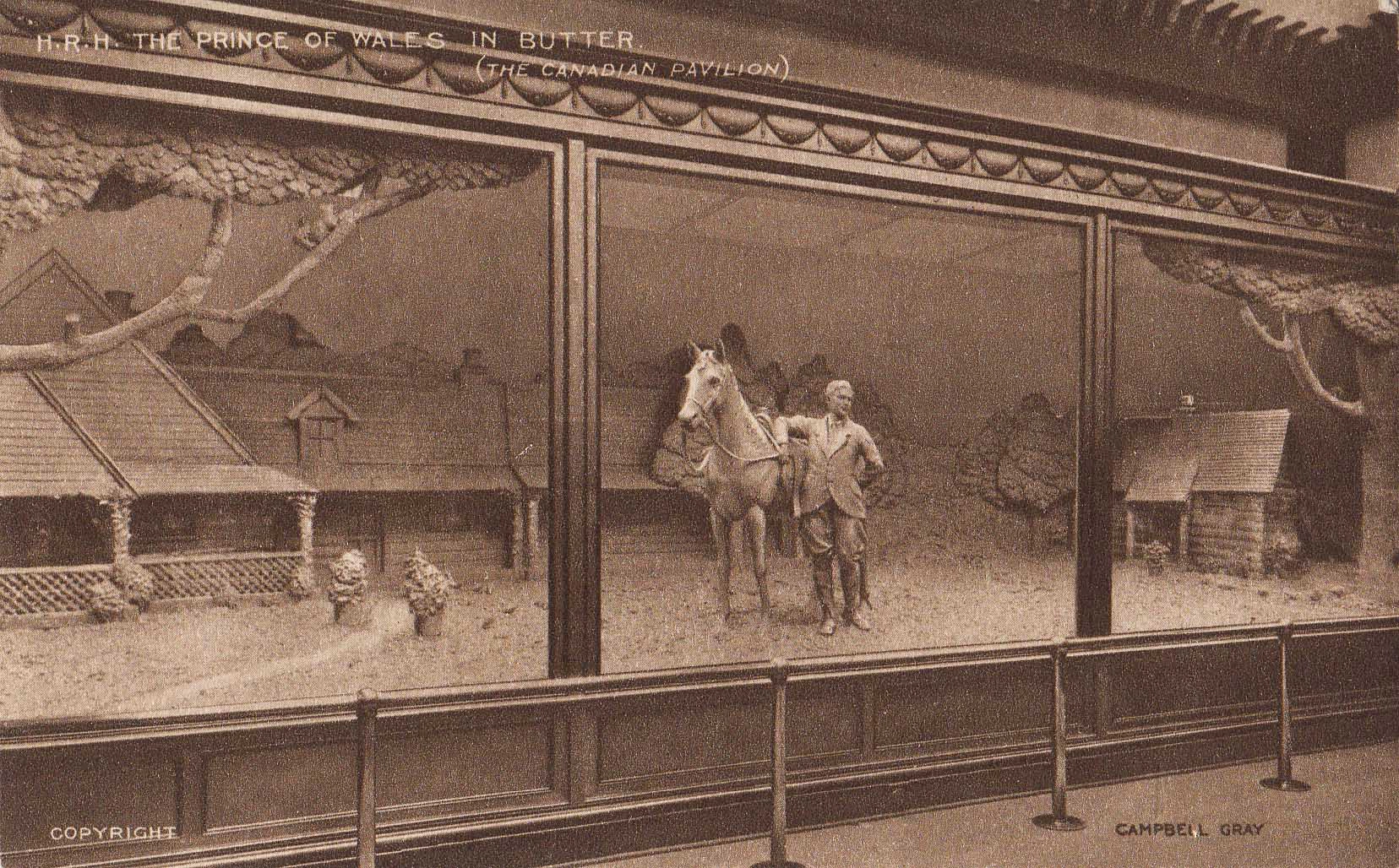
postcard from the British Empire Exhibition, 1924
In 1924 the British Empire Exhibition was the largest exhibition to have been staged anywhere in the world, and the pavilions were piled high with theatrically displayed commodities, produced by countries Britain ruled over. One of the most absurd examples was a life-sized refrigerated statue of the Prince of Wales riding a horse, carved in butter, which occupied the Canada pavilion. At that time, butter was one of Canada’s main exports to the UK. Human exhibits were also included, with over 60 west African people housed in ‘native villages’ in the pavilions representing Gold Coast (now Ghana), Nigeria and Sierra Leone.
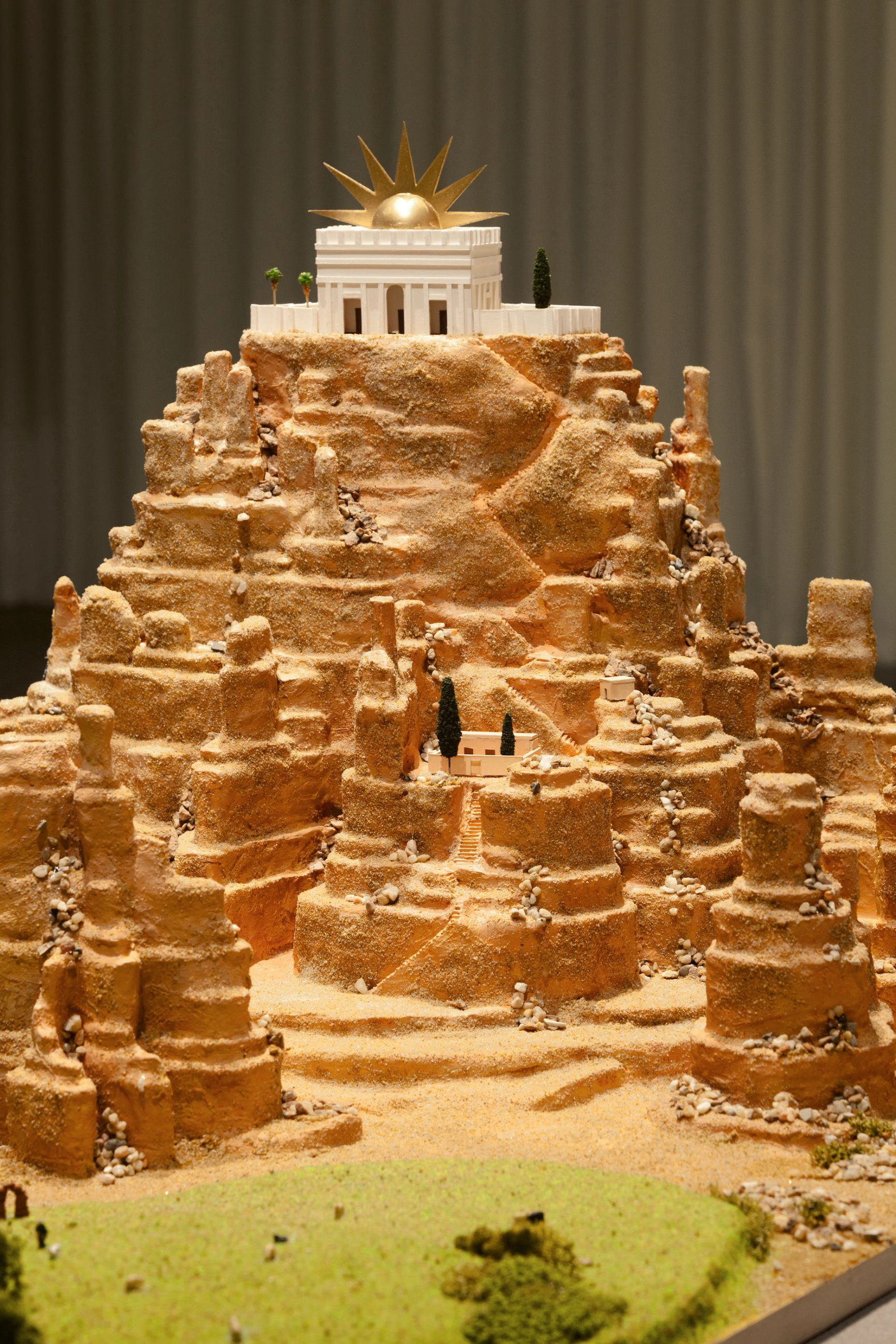
The Truth Itself Speaks Through Me, 2012, mixed-media model
A second model titled The Truth Itself Speaks Through Me (2012) reveals the journey to the Celestial City recorded in The Pilgrim’s Progress. In the nineteenth century, this book was instrumental in educating the factory workers of the industrial revolution, illustrating the principle that the only route to paradise was through hard work. In many respects it exemplifies German Sociologist Max Weber’s famous theory about the relationship between puritanism and the ideology of work. In his book The Protestant Ethic and the Spirit of Capitalism (1920–21), Weber argues that the Protestant work ethic was vital to the emergence of modern capitalism.
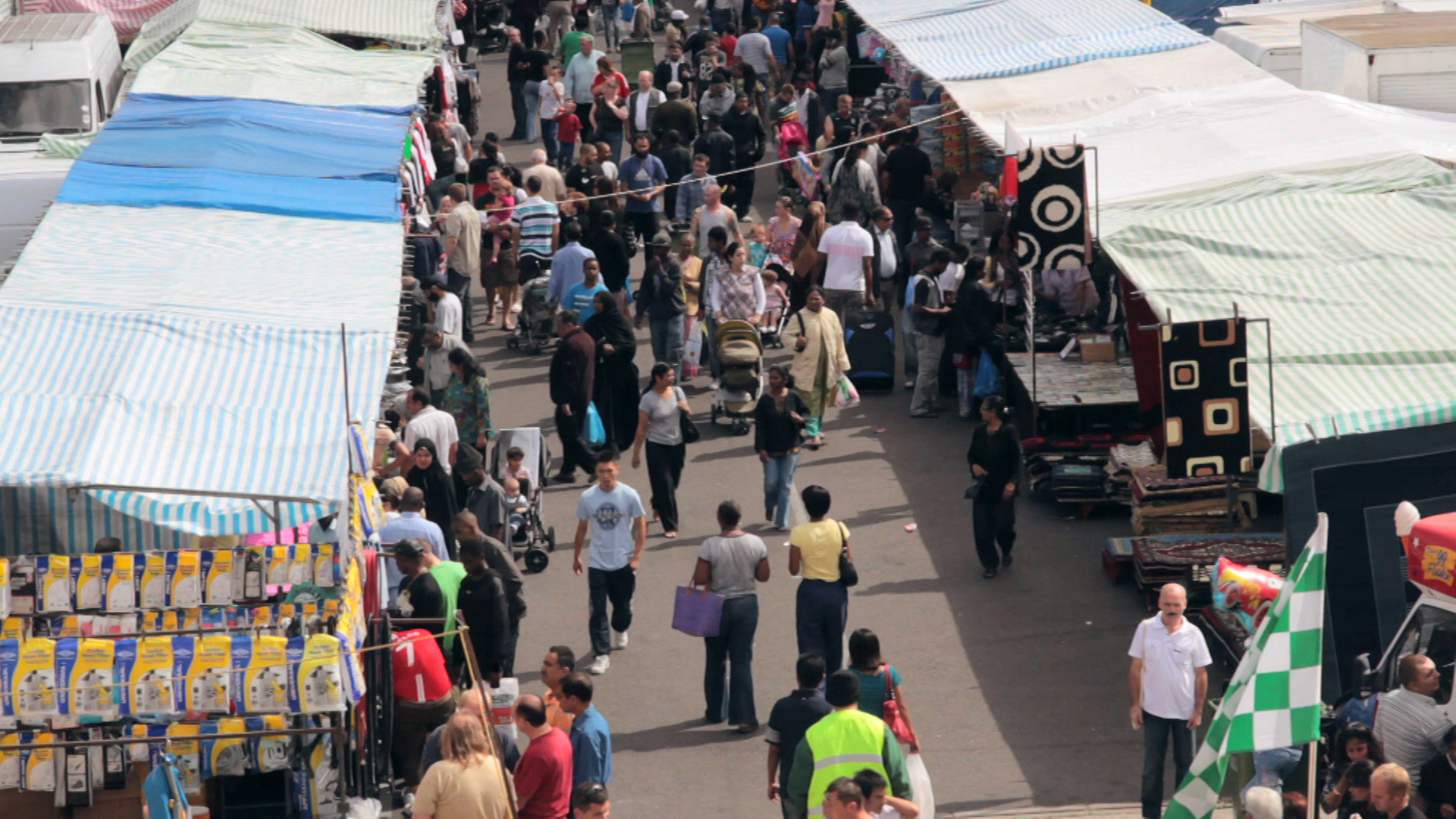
Market, 2009, video, 10 min. 9 sec., still
Market, 2009, video, 10 min. 9 sec.
Accompanying the models is a video titled Market, shot in a contemporary London street market in the shadow of Wembley Stadium. Next to the traders sits a red brick neighbourhood named the Empire Estate. In the 1920s, the British Empire Exhibition was the main engine behind the westward expansion of London and was used to advertise and promote new ways of living; suburban lifestyles in which ‘pioneers’ and their families were encouraged to settle in the ‘colonies’ surrounding Wembley. Parallels can be made with contemporary mega events, such as the London Olympics of 2012, which similarly exemplified the ideologies of ‘progress’ and competition, changing the urban landscape and the demographics of whole city districts.
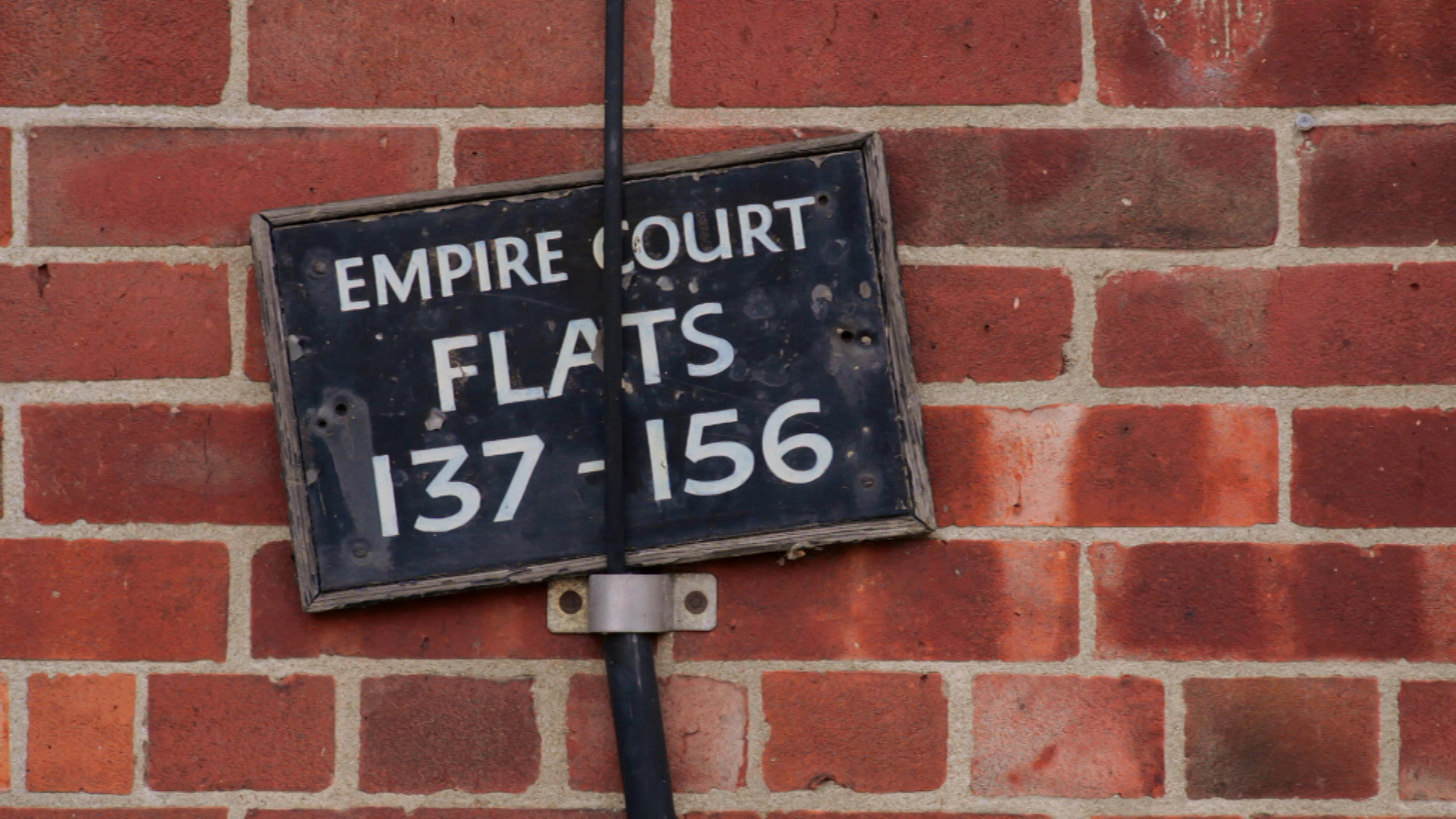
Market, 2009, video, 10 min. 9 sec., still
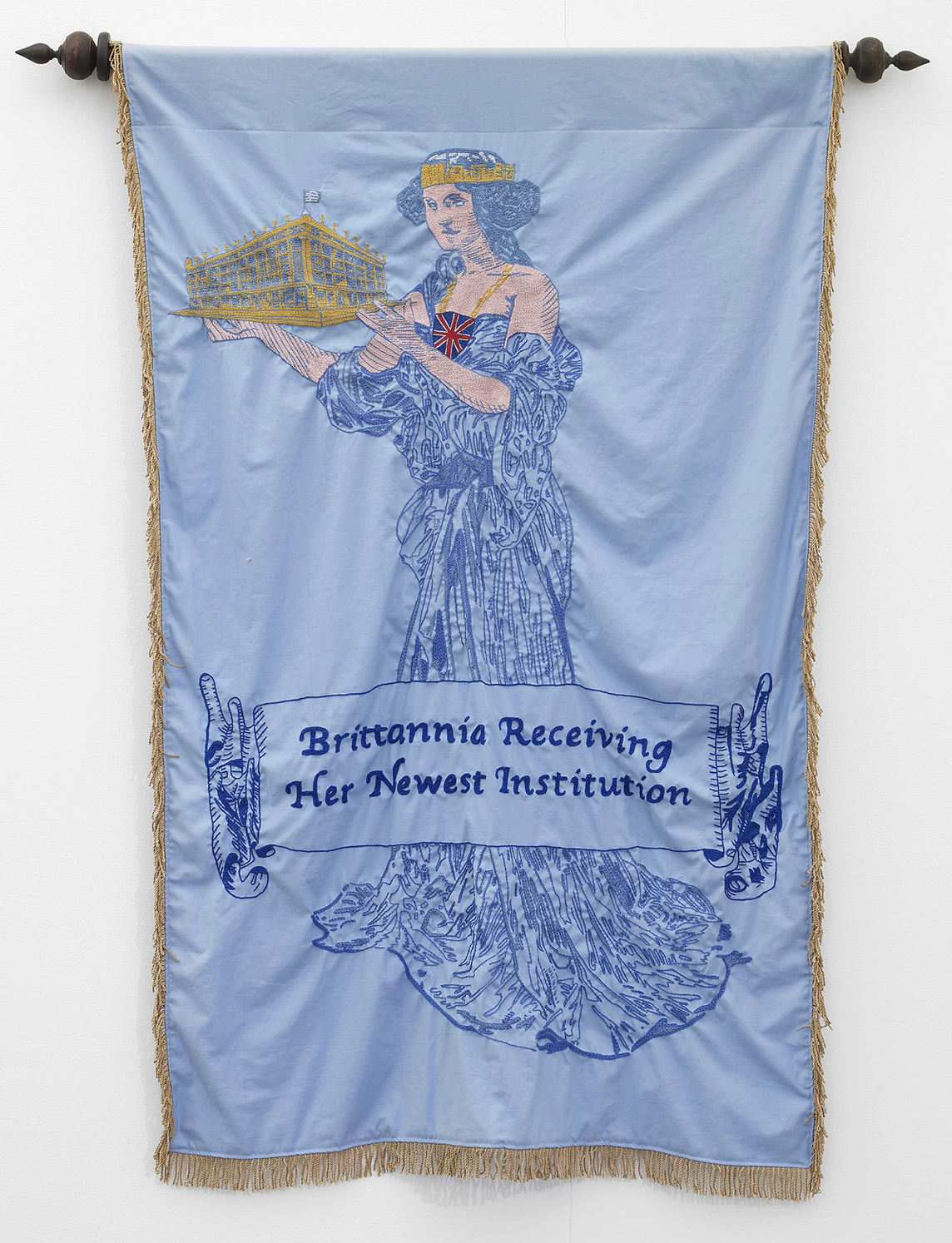
Britannia Receiving her Newest Institution, 2012, hand-embroidered fabric banner
Two fabric banners are included in the installation. In Britannia Receiving her Newest Institution, embroidered in the Arts and Crafts style, Britannia is seen holding a miniature version of the Selfridges department store in London. How Paul’s Penny Became a Pound is based on a joyless nineteenth-century book that taught British children about banking.
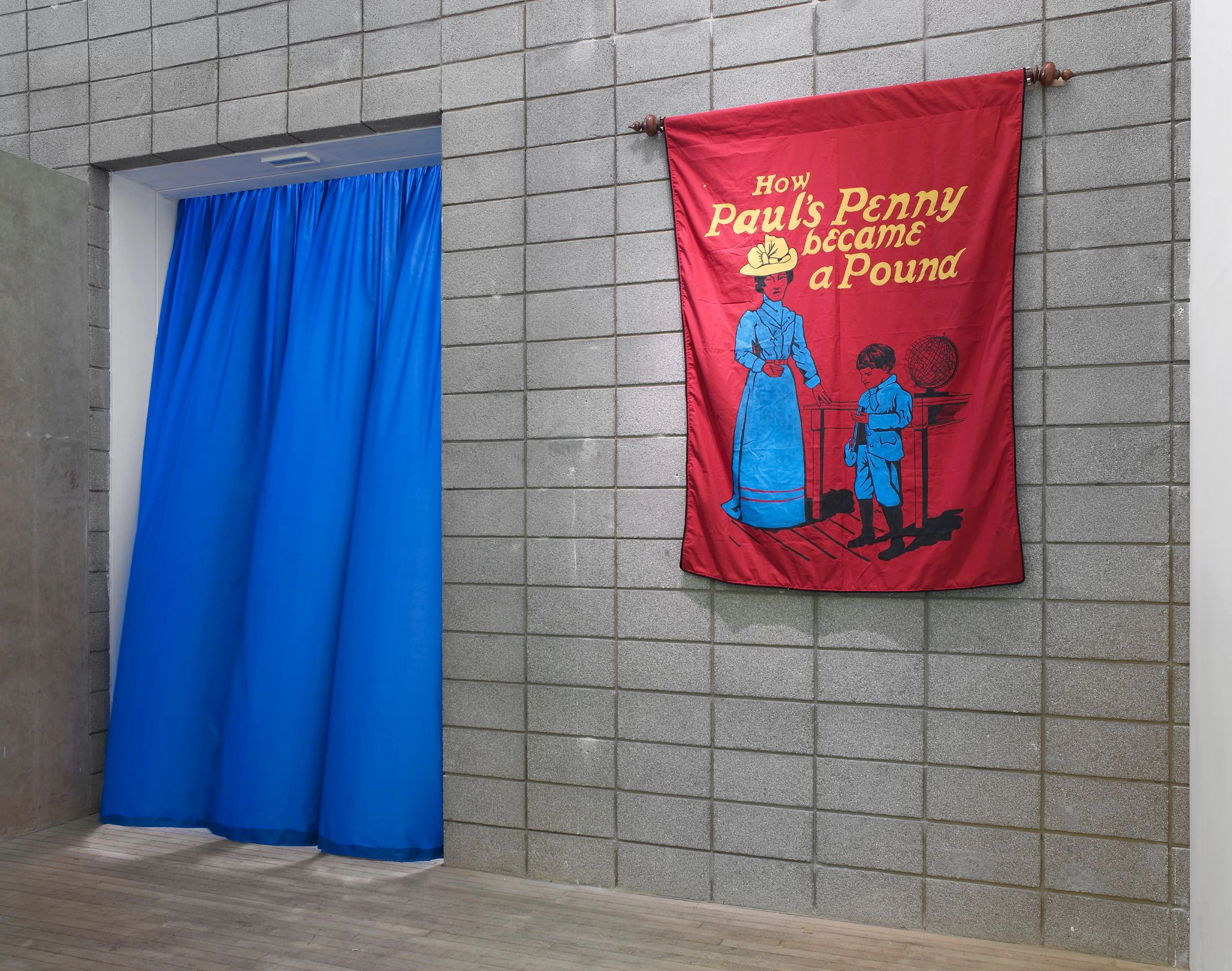
How Paul’s Penny Became a Pound, 2012, hand-painted fabric banner
Rise Early, Be Industrious exhibition catalogue/artist’s book, published by Sternberg Press, 2016
(buy the book)